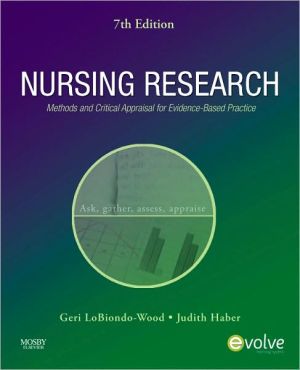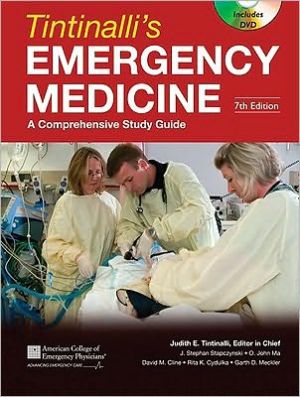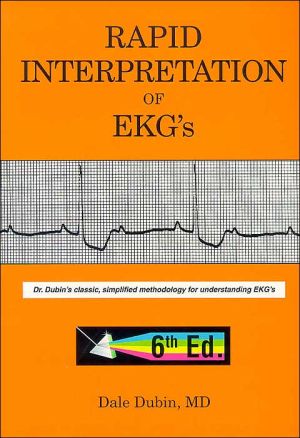Nursing Research: Methods and Critical Appraisal for Evidence-Based Practice
Now in full color, this easy-to-understand textbook offers a comprehensive introduction to nursing research concepts and methods. Evidence-based practice is emphasized throughout, with clear guidelines for evaluating research and applying scientific evidence to practice. Coverage includes qualitative and quantitative research, appraising and critiquing research, critical thinking, and clinical decision-making using research information.\ • Separate coverage of quantitative and qualitative...
Search in google:
Now in full color, this easy-to-understand textbook offers a comprehensive introduction to nursing research concepts and methods. Evidence-based practice is emphasized throughout, with clear guidelines for evaluating research and applying scientific evidence to practice. Coverage includes qualitative and quantitative research, appraising and critiquing research, critical thinking, and clinical decision-making using research information.• Separate coverage of quantitative and qualitative research makes each type of research easier to understand. • Research Vignettes present real-world applications of nursing research to help bridge the gaps among clinical research, academia, and clinical practice. • Sample critiques of research articles correspond to the principles presented throughout the book and demonstrate how to apply key concepts and techniques when evaluating actual nursing research articles.• An increased focus on evidence-based practice highlights its importance to nursing research and addresses the proper way to appraise and apply research to practice.• Completely updated content includes new sample research articles that keep you current with the latest research topics and trends.• A user-friendly, full-color layout features helpful boxes, tables, and illustrations that highlight key concepts and help you quickly find information.• Balanced coverage of qualitative and quantitative research ensures each type is equally represented in value and importance to evidence-based practice.• A set of Research Appraisal Guidelines inside the back cover offers quick reference for completing assignments or evaluating research. Doody Review Services Reviewer:Diane M Tomasic, EdD, RN(Slippery Rock University )Description:This concise presentation of the steps of the research process, the steps of the critique process, and the tools for evidence-based practice includes free online resources for faculty and students. The previous edition was published in 2006.Purpose:The purpose is to help students develop a basic understanding of the steps of the research process that will enable them to critically analyze research studies and apply evidence in clinical practice. The development of an evidence-based foundation is an essential priority for nursing.Audience:The primary audience is undergraduate nursing students, but the book also is useful as a resource for master's and doctoral level students wanting a concise review of the basic steps of the research process, research critique process, and tools for evidence-based practice. It is also recommended for doctor of nursing practice (DNP) students preparing to be experts in evidence-based practice. The authors have a long history in research as authors and researchers.Features:This edition has essentially the same chapters as the previous edition, but it includes some changes related to increasing the evidence-based focus. Chapters include boxes with evidence-based practice tips. Chapter 1 has a stronger focus on evidence-based content, combining the material on the role of research and integrating evidence-based practice. New research articles are included in the appendixes. This book links the steps of the research process with the concepts of evidence-based practice. Promoting critical thinking is a strong point. Chapters incorporate critical thinking decision paths, evidence-based practice tips, helpful hints, and critical thinking challenges. The free online resources for instructors include a test bank, instructor's manual, PowerPoint slides, audience response system questions, and an image collection. Resources for students include a companion study guide and access to the Evolve website, which has summative review material, research articles, critiquing exercises, and review questions for reinforcement of concepts. Assessment:With the integration of a strong emphasis on evidence-based practice, this book should be very helpful to the target audience.
PART I. OVERVIEW OF RESEARCH AND EVIDENCE-BASED PRACTICE Integrating the Processes of Research and Evidence-Based PracticeResearch Questions, Hypotheses, and Clinical QuestionsGathering and Appraising the LiteraturePART II. PROCESSES AND EVIDENCE RELATED TO QUALITATIVE RESEARCHIntroduction to Qualitative ResearchQualitative Approaches to ResearchAppraising Qualitative ResearchPART III. PROCESSES AND EVIDENCE RELATED TO QUANTITATIVE RESEARCHIntroduction to Quantitative ResearchExperimental and Quasiexperimental DesignsNonexperimental DesignsSamplingLegal and Ethical IssuesData Collection MethodsReliability and ValidityData Analysis: Descriptive and Inferential StatisticsUnderstanding Research FindingsAppraising Quantitative ResearchPART IV. APPLICATION OF RESEARCH: EVIDENCE-BASED PRACTICEDeveloping an Evidence-Based PracticeTools for Applying Evidence to Practice APPENDICES
\ Reviewer: Diane M Tomasic, EdD, RN(Slippery Rock University )\ Description: This concise presentation of the steps of the research process, the steps of the critique process, and the tools for evidence-based practice includes free online resources for faculty and students. The previous edition was published in 2006.\ Purpose: The purpose is to help students develop a basic understanding of the steps of the research process that will enable them to critically analyze research studies and apply evidence in clinical practice. The development of an evidence-based foundation is an essential priority for nursing.\ Audience: The primary audience is undergraduate nursing students, but the book also is useful as a resource for master's and doctoral level students wanting a concise review of the basic steps of the research process, research critique process, and tools for evidence-based practice. It is also recommended for doctor of nursing practice (DNP) students preparing to be experts in evidence-based practice. The authors have a long history in research as authors and researchers.\ Features: This edition has essentially the same chapters as the previous edition, but it includes some changes related to increasing the evidence-based focus. Chapters include boxes with evidence-based practice tips. Chapter 1 has a stronger focus on evidence-based content, combining the material on the role of research and integrating evidence-based practice. New research articles are included in the appendixes. This book links the steps of the research process with the concepts of evidence-based practice. Promoting critical thinking is a strong point. Chapters incorporate critical thinking decision paths, evidence-based practice tips, helpful hints, and critical thinking challenges. The free online resources for instructors include a test bank, instructor's manual, PowerPoint slides, audience response system questions, and an image collection. Resources for students include a companion study guide and access to the Evolve website, which has summative review material, research articles, critiquing exercises, and review questions for reinforcement of concepts. \ Assessment: With the integration of a strong emphasis on evidence-based practice, this book should be very helpful to the target audience.\ \ \ \ \ Reviewer: Diane M Tomasic, EdD, RN (Slippery Rock University ) \ Description: This concise presentation of the steps of the research process, the steps of the critique process, and the tools for evidence-based practice includes free online resources for faculty and students. The previous edition was published in 2006.\ Purpose: The purpose is to help students develop a basic understanding of the steps of the research process that will enable them to critically analyze research studies and apply evidence in clinical practice. The development of an evidence-based foundation is an essential priority for nursing.\ Audience: The primary audience is undergraduate nursing students, but the book also is useful as a resource for master's and doctoral level students wanting a concise review of the basic steps of the research process, research critique process, and tools for evidence-based practice. It is also recommended for doctor of nursing practice (DNP) students preparing to be experts in evidence-based practice. The authors have a long history in research as authors and researchers.\ Features: This edition has essentially the same chapters as the previous edition, but it includes some changes related to increasing the evidence-based focus. Chapters include boxes with evidence-based practice tips. Chapter 1 has a stronger focus on evidence-based content, combining the material on the role of research and integrating evidence-based practice. New research articles are included in the appendixes. This book links the steps of the research process with the concepts of evidence-based practice. Promoting critical thinking is a strong point. Chapters incorporate critical thinking decision paths, evidence-based practice tips, helpful hints, and critical thinking challenges. The free online resources for instructors include a test bank, instructor's manual, PowerPoint slides, audience response system questions, and an image collection. Resources for students include a companion study guide and access to the Evolve website, which has summative review material, research articles, critiquing exercises, and review questions for reinforcement of concepts. \ Assessment: With the integration of a strong emphasis on evidence-based practice, this book should be very helpful to the target audience.\ \ \ From The CriticsReviewer:Diane M Tomasic, EdD, RN(Slippery Rock University )\ Description:This concise presentation of the steps of the research process, the steps of the critique process, and the tools for evidence-based practice includes free online resources for faculty and students. The previous edition was published in 2006.\ Purpose:The purpose is to help students develop a basic understanding of the steps of the research process that will enable them to critically analyze research studies and apply evidence in clinical practice. The development of an evidence-based foundation is an essential priority for nursing.\ Audience:The primary audience is undergraduate nursing students, but the book also is useful as a resource for master's and doctoral level students wanting a concise review of the basic steps of the research process, research critique process, and tools for evidence-based practice. It is also recommended for doctor of nursing practice (DNP) students preparing to be experts in evidence-based practice. The authors have a long history in research as authors and researchers.\ Features:This edition has essentially the same chapters as the previous edition, but it includes some changes related to increasing the evidence-based focus. Chapters include boxes with evidence-based practice tips. Chapter 1 has a stronger focus on evidence-based content, combining the material on the role of research and integrating evidence-based practice. New research articles are included in the appendixes. This book links the steps of the research process with the concepts of evidence-based practice. Promoting critical thinking is a strong point. Chapters incorporate critical thinking decision paths, evidence-based practice tips, helpful hints, and critical thinking challenges. The free online resources for instructors include a test bank, instructor's manual, PowerPoint slides, audience response system questions, and an image collection. Resources for students include a companion study guide and access to the Evolve website, which has summative review material, research articles, critiquing exercises, and review questions for reinforcement of concepts. \ Assessment:With the integration of a strong emphasis on evidence-based practice, this book should be very helpful to the target audience.\ \








